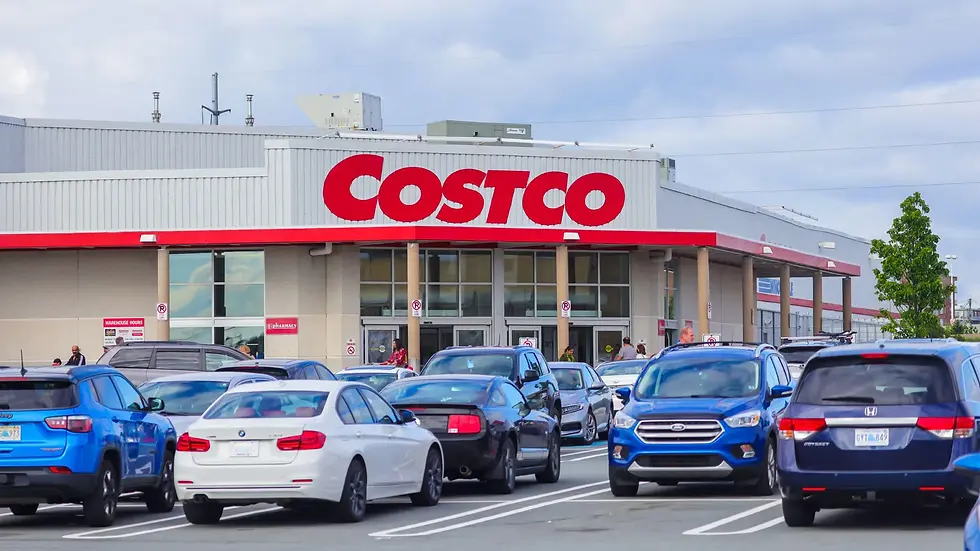The Thrill of the Hunt: How Costco's Road Shows Drive Sales and Customer Engagement
- Alex Steinberg

- Oct 7
- 3 min read

Costco’s road shows have become a staple of the retail experience, drawing in crowds and creating a buzz around new products and deals. A key factor contributing to the success of these events is the sense of urgency and excitement that Costco creates among its customers. By leveraging psychological and marketing principles, Costco’s road shows tap into customers’ emotions, making them more likely to make a purchase and share the experience with others.
The treasure hunt experience is a crucial element of Costco’s road show strategy. Customers are drawn in by the promise of limited-time deals and exclusive products, which creates a sense of urgency to try the product. This scarcity principle is a powerful motivator, encouraging customers to act quickly and make purchases before items sell out. The road show’s layout and design further enhance the treasure hunt experience, with products displayed in a way that creates a sense of discovery.
This tactile experience is particularly effective in creating an emotional connection with customers, making them more likely to make a purchase.
The psychology of scarcity is a fundamental concept in marketing. When people perceive that something is scarce or hard to obtain, they tend to value it more highly. This is because scarcity triggers a psychological response known as loss aversion, where the fear of missing out on a deal outweighs the potential benefits of waiting or passing on the purchase. Costco’s road shows expertly leverage this principle by creating a sense of urgency around their products. Limited-time deals and exclusive offers are prominently displayed, and customers are encouraged to act quickly to avoid missing out. This sense of urgency is further amplified by the road show’s limited-time nature, creating a sense of pressure to make a purchase before the event ends.
Social proof is another key factor in the success of Costco’s road shows. When customers see others buying and enthusiastically responding to products, they’re more likely to do the same. This phenomenon is known as social influence, where the actions of others influence our own behavior. At Costco’s road shows, social proof is created through various means, including crowd noise, product demonstrations, and customer testimonials. Satisfied customers are often on hand to share their experiences and recommendations, providing social proof and building trust with potential buyers. This social validation can be particularly effective in building credibility and trust with customers, making them more likely to make a purchase.
Research has shown that the scarcity principle can have a significant impact on consumer behavior. A study published in the Journal of Marketing Research found that scarcity messages increased consumer loyalty and willingness to pay (Lynn, 2015). Another study found that limited-time offers can increase the perceived value of a product and drive sales (Inman & McAlister, 1993). Costco’s road shows have also been successful in driving sales and increasing customer engagement. According to a report by CNBC, Costco’s road shows can drive sales of specific products by as much as 20–30% (CNBC, 2020). This success can be attributed to the combination of the scarcity principle, social proof, and the treasure hunt experience, which creates an engaging and persuasive retail environment.
In addition to driving sales, Costco’s road shows also play a critical role in building customer loyalty and retention. By creating a sense of exclusivity and offering limited-time deals, Costco’s road shows make customers feel valued and appreciated. This can lead to increased customer loyalty, as customers are more likely to return to the store and make repeat purchases. Furthermore, the road shows provide an opportunity for customers to engage with Costco’s products and services in a more personal and interactive way, building a stronger relationship between the customer and the company.
The success of Costco’s road shows can also be attributed to the company’s ability to create a sense of community and fun around its products. The road shows are often designed to be entertaining and engaging, with product demonstrations, giveaways, and other activities that create a festive atmosphere. This can help to build brand loyalty and make the shopping experience more enjoyable, increasing the likelihood that customers will return to the store.
In conclusion, Costco’s road shows are a masterclass in creating a sense of urgency and excitement among customers. By leveraging the scarcity principle, social proof, and the treasure hunt experience, Costco creates an engaging and persuasive retail environment that drives sales and builds customer loyalty. As the retail landscape continues to evolve, it’s clear that Costco’s road shows will remain a key part of its strategy for attracting and retaining customers.
References
Inman, J. J., & McAlister, L. (1993). A Retailer Promotion Policy Model Considering Promotion Signal Sensitivity.Journal of Marketing Research, 30(3), 310–323.
Lynn, M. (2015). Scarcity Effects on Consumer Decision Making. Journal of Marketing Research, 52(5), 729–742.
CNBC. (2020). How Costco’s Road Shows Drive Sales and Customer Engagement.




Comments